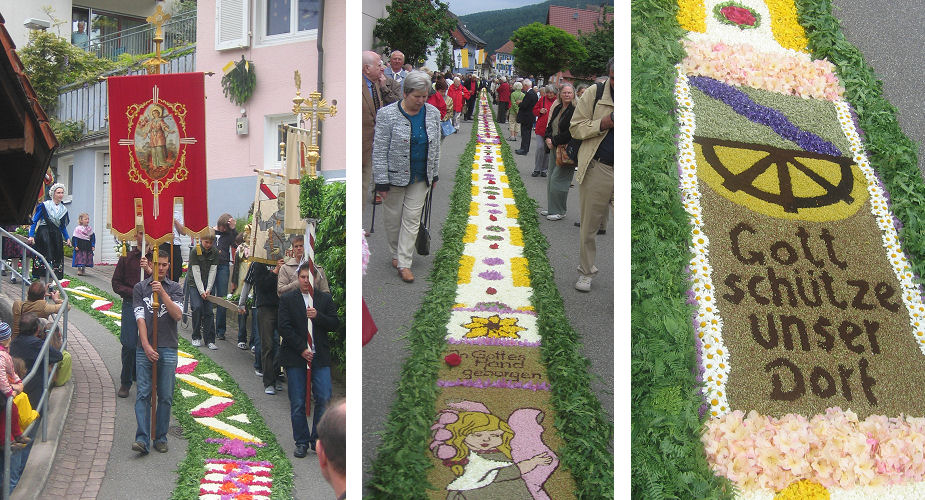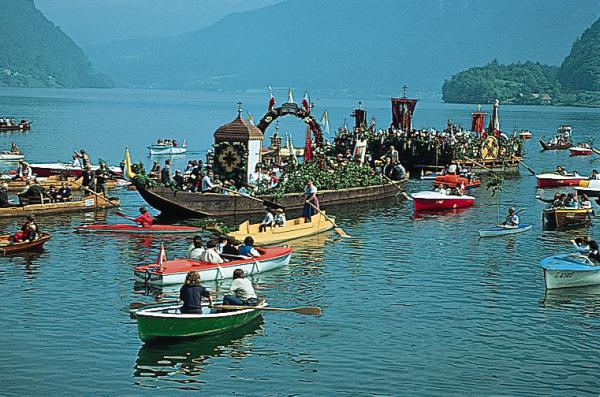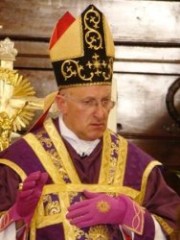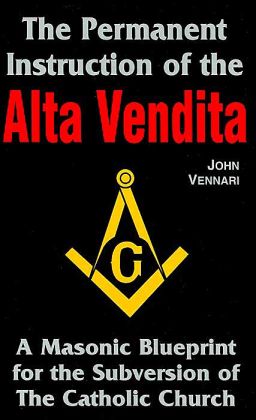While I tend to believe in the alleged apparitions in Garabandal, Spain to be authentic, I wait for the final judgement of holy mother Church in this regard. I have been fascinated by the phenomena there since childhood. It was the message itself so closely tied with Fatima and not the supposed accompanying mystical phenomena that drew me to it. I confess however that it is the belief in the manifestations of Garabandal by Padre Pio (1887-1968), St Maria Maravillas (1891-1974) and the French stigmatist Marthe Robin (1902-1981) that has convinced me more than ever of their authenticity.
I present this repost from the Blog "CATHOLICISM PURE" for your edification:
The Story of Garabandal – fifty years later
During a time when I was working in Spain I befriended a very devout little old lady called Blanca, who I had often seen deep in prayer in front of the Blessed Sacrament. In the course of our conversations together, she told me the fascinating story of Garabandal, a tiny village in northern Spain, in the province of Santander, near the rugged and beautiful mountains called ‘Picos de Europa’. (The full name of the village is San Sebastian de Garabandal.) Blanca was an eyewitness to some of the most extraordinary events that took place there from 18th June 1961 to 13th November 1965.
As we draw near to the fiftieth anniversary of the first apparition, let us look at some of the facts of the story of Garabandal. (Please note that these are private revelations and no one is obliged to believe in them.)
The Seers
Four girls: Conchita, Mari Loli, Jacinta and Mari Cruz, aged between 11 and 12 years of age, had many ongoing visions, ecstasies and locutions with the Blessed Virgin Mary. The apparitions were so numerous and some of these were so disarmingly normal, natural and sweet, that it has set the apparition site of Garabandal apart from any other where the Blessed Virgin has previously appeared.
The Visions
Whilst the four girls were playing in an orchard on 18th June 1961 there was a sudden thunderclap and to their surprise they saw before them the bright figure of the Archangel Michael. He appeared to them again in the same place on the following days and announced that on 2nd July they would see Our Lady. This was the beginning of the Garabandal apparitions. The news spread quickly through the region. The 2nd July was a Sunday and the town was crowded with people from all social levels and very many from out of town, among them several physicians and priests. At 6pm the girls went to the place where the Angel had appeared, and immediately entered into ecstasy. Our Lady appeared to them accompanied by two angels, one being St. Michael. After this first apparition there were many more. They spoke openly and familiarly with their Heavenly Mother and said the rosary in her presence. During 1961 and 1962 Our Lady appeared several times each week. The four girls did not always receive the apparition together. Sometimes only one, other times two or three of them saw the vision. Nor was it always at the same hour of the day. Our Lady appeared many times at night and even early in the morning, in an attitude of sacrifice and penance, at the same hours when Our Lord is most offended by the sins of men. Even so, the girls would arise the following morning, as early as usual, to work in the fields, carrying bundles of grass or wood, or tending the cattle and sheep, without showing signs of fatigue. Mari Cruz had her last vision in 1962, Mari Loli and Jacinta in 1963, and only Conchita continued to have visions until 1965, although these became less and less frequent.
When the vision appeared, the girls fell instantaneously on their knees, striking the sharp rocks with a loud noise that was frightening, yet they showed no signs of injury. The expression on their faces was suddenly transformed, becoming extraordinarily beautiful, sweet, one of profound mysticism. They were completely absorbed in their rapture, unaware of anyone or any material thing around them except for each other. In fact all attempts to distract them failed. They did not react to pricks, burns or blows, nor even to the powerful beams of strong light focused on them when their eyes would not so much as flicker or blink. Quite the contrary, their eyes remained wide open, expressing a look of intense joy. During these ecstasies, which lasted anything from a few minutes to several hours, time did not seem to count. On many occasions they remained immobile in off-balance, beautiful “sculptured-like” positions, heads tilted far back, eyes looking up, kneeling on the rocks or bare-legged in the snow. At the end of the ecstasy they showed no signs of excitation or nervousness, just deep, profound peace and joy.
Many visitors and villagers gave the girls various objects, such as bibles, rosaries, scapulars, medals, crucifixes, wedding rings, etc. for Our Lady to kiss. In ecstasy, the girls raised them up to Her and She kissed them. Then, guided by Our Lady, the girls returned the items to their correct owners, even in cases where the person had first confided the object to someone else so the child did not know who the real owner was. Things “kissed” by Our Lady have been the instruments of very special favours.
There was other phenomena during the time of the visions, including ecstatic walks when the girls seemed to defy the laws of gravity as though endowed by some sort of spiritual agility. Guided solely by the vision, they ran or walked at great speed down the steep mountainside, even backwards, so that it was impossible for the astonished spectators to follow them.
The Miracle of the Host
(footage of the miraculous Host starts at 2:45)
The Miracle of the Host is one of the most amazing occurrences at Garabandal. Previously, on occasions when their parish priest from the neighbouring village was unable to visit Garabandal, the girls recounted how they had sometimes received Holy Communion from an angel of the Lord who had appeared to them with a golden chalice, requesting that they pray the Confiteor beforehand. Then on 18th July 1962, when the town was crowded with visitors, this miracle was captured on film. At midnight Conchita, who had remained in her home continually surrounded by visitors, entered into ecstasy and went out into the street. At a short distance from her house she fell down on her knees in the midst of the crowd. Lanterns were focussing on her as she put out her tongue upon which nothing was resting, as everyone could see. In a few moments, a white host appeared on her tongue and remained there for a few minutes.
Father Luis Marie Andreu
The only other person to see Our Blessed Mother at Garabandal was a 38 year old Spanish Jesuit priest, Father Luis Marie Andreu. On 8th August 1961 Father Luis was among the spectators at ‘The Pines’ above the village when suddenly he became an integral part of the Garabandal drama. He was heard to say, “Miracle! Miracle!” Not only did he see the Virgin Mary, but he was shown the forthcoming Great Miracle. Although he had never had any history of serious illness, he died that same night of complete joy. His final words were:
“Oh! What a sweet and lovely mother we have in Heaven….how happy I am….what a favour the Blessed Virgin has bestowed on me! How fortunate we are to have a mother like her in Heaven!…… The girls have given us an example of how we must act with the Blessed Virgin. There is no doubt in my mind that the things involving the girls are true. Why should the Blessed Virgin have chosen us? This is the happiest day of my life.”
With these words Father Luis lowered his head and died. In a subsequent vision, the Virgin told the seers that Fr. Luis had seen her and a preview of the Great Miracle and that he died of joy.
Our Blessed Mother showed special attention and concern for all priests, repeatedly asking that they come to Garabandal. She gave the girls the ability to recognise them even when they came dressed as laymen, revealing the state of their souls. Over and over again she asked everyone to pray and make sacrifices for priests, because Satan is constantly trying to tempt and trap the souls of priests. She taught the children that priests were more important even than the angels because by means of their ordination they alone among all men have the power to change the bread and wine into the Sacred Body and Blood of Christ during the Holy Sacrifice of the Mass.
The Warning and Great Miracle
The Blessed Virgin spoke of a Warning to come, and a Great Miracle which will be announced in advance by Conchita – no one knows when – yet these do not appear to be the main reasons for Her coming. (A ‘Great Sign’ will afterwards be permanently visible at The Pines above the village.) Like any mother who loves her children, the Blessed Virgin, taught and guided the girls, in a natural and loving manner, the path to Heaven. She lamented the sins of mankind that so offend Her Divine Son, and she repeated many times the need for prayer and penance for priests, love for the Holy Eucharist, Eucharistic Devotion, and visits to the Blessed Sacrament. Only then, if these messages are not heeded, will a ‘Chastisement’ befall mankind. This seems to be very much in line with other apparition sites, notably Fatima and La Salette.
The Fruits of Garabandal
The fruits of Garabandal are all very positive. In spite of the fact that the memories of these visions of Our Lady dimmed in the girls’ minds, even to the point when they said they had never happened, they reiterated the truth of them later on. (Our Lady had foretold them, much to their incredulity at the time, that this would happen.) All four girls married and had children; Mari Cruz’s husband is Spanish and she is the only one still living in Spain; Conchita, Mari Loli and Jacinta married Americans, and Conchita and Jacinta are living in the USA. They lead humble prayerful lives, fulfilling their duties as wives and mothers. Mari Loli, who also lived in the USA, died just before her 60th birthday in April 2009 after a long illness and much suffering, both physical and spiritual. Mari Loli offered all her sufferings up for the sanctification of priests, just as Our Lady had requested of her.
Another of the good fruits of Garabandal is the conversion of many sinners and unbelievers and those of different faiths. Those suffering from religious indifference have experienced an increase in Faith, Hope and Charity.
Conclusion
The Catholic Church has prudently withheld her opinion over the apparitions at Garabandal, nor will it pronounce on them until the promised ‘Warning’, and the ‘Miracle’ take place. Nevertheless, the Bishop of Santander, Don Eugenio Beitia wrote:
“We point out, however, that we have not found anything deserving of ecclesiastical censorship or condemnation either in the doctrine or in the spiritual recommendations that have been publicised as having been addressed to the faithful…..”
Saint Padre Pio of Pietrelcina and Blessed Mother Teresa of Calcutta endorsed the apparitions too.
All the Blessed Virgin’s messages urging people to give greater value to the Holy Eucharist, go regularly to Confession, pray more (especially for priests), make sacrifices, meditate on the Passion of Jesus, have a holy fear of offending God, be obedient to the Magisterium of the Church, and above all to lead good lives, are totally in unison with Catholic teaching. At the Blessed Virgin’s last apparition to Conchita she said: “Conchita, I am not coming only for you but I am coming for all my children, with a desire to bring them closer to Our Hearts.” (i.e. The Sacred Heart of Jesus and the Immaculate Heart of Mary.)
To learn more about Garabandal: http://www.garabandal.org/











.jpg) Whoever thought that with the arrival of the Chair of Peter the South American Jesuit Jorge Mario Bergoglio Mass in Latin in its extra-ordinary form was to be archived forever, he had miscalculated. The motu proprio of Ratzinger of 2007, Summorum Pontificum, is untouchable, and the 1962 Missal of John XXIII (which is the latest version of the Tridentine of St Pope Pius V) is safe. That rite with the celebrant facing God and not toward the people, with balustrades to separating the pews for the faithful from the presbytery, it is not an antique, a rite to be shipped to a museum gathering dust. It 'was just the reigning Pontiff telling upon, receiving a few days ago in the Apostolic Palace, the delegation of bishops from Puglia come to Rome for the ad limina Apostolorum visit, as is customary with the world episcopate every five years.
Whoever thought that with the arrival of the Chair of Peter the South American Jesuit Jorge Mario Bergoglio Mass in Latin in its extra-ordinary form was to be archived forever, he had miscalculated. The motu proprio of Ratzinger of 2007, Summorum Pontificum, is untouchable, and the 1962 Missal of John XXIII (which is the latest version of the Tridentine of St Pope Pius V) is safe. That rite with the celebrant facing God and not toward the people, with balustrades to separating the pews for the faithful from the presbytery, it is not an antique, a rite to be shipped to a museum gathering dust. It 'was just the reigning Pontiff telling upon, receiving a few days ago in the Apostolic Palace, the delegation of bishops from Puglia come to Rome for the ad limina Apostolorum visit, as is customary with the world episcopate every five years.


 In the bimonthly "The New Man" of October 22, 2011 Father Claude Barthe writes an excellent record of the missionary work of the Bishop of Fréjus-Toulon, Bishop Dominique Rey. Addressing, among others things, the liturgical question, it states that the construction of the reform of the New Mass "is in the spirit of the motu proprio Summorum Pontificum , that is to say, for the sake of enriching mutual benefit of both forms of the Roman rite. But it has a long way to go to where first and foremost the sacrificial dimension inherent in the Eucharist Community dimension must be found together. "
In the bimonthly "The New Man" of October 22, 2011 Father Claude Barthe writes an excellent record of the missionary work of the Bishop of Fréjus-Toulon, Bishop Dominique Rey. Addressing, among others things, the liturgical question, it states that the construction of the reform of the New Mass "is in the spirit of the motu proprio Summorum Pontificum , that is to say, for the sake of enriching mutual benefit of both forms of the Roman rite. But it has a long way to go to where first and foremost the sacrificial dimension inherent in the Eucharist Community dimension must be found together. "